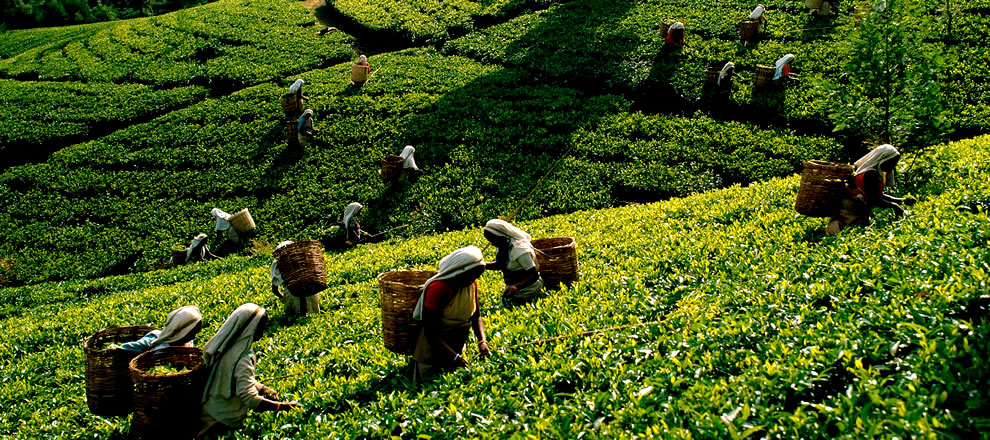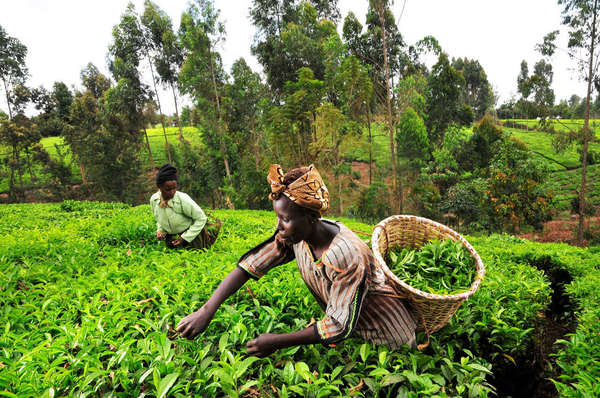Tea plantations in Sri Lanka are facing insect pests, and the Sri Lankan Institute of Tea use allows tea farmers to use herbicides and pesticides.
An industry official said tea production in Sri Lanka could fall sharply due to weed, pest and fungus outbreaks triggered by pesticide bans, coupled with problems with fertilizers. Roshan Rajadurai, spokesman for the Growers Association, which represents farm managers, said in a statement that without herbicides, soil erosion intensifies and fertility is lost. Sri Lanka uses pesticides and herbicides approved by the Tea Research Institute (TRI). Manual weeding with a scraper prior to herbicide application resulted in up to 52 tons of soil loss per hectare. "When manual weeding is complete, weeds removed from the field take away 32 kg of nitrogen, 40 kg of potassium and 320 kg of carbon, reducing organic carbon and nutrients," he said. "TRI has confirmed that irregular weeding reduces the yield of mature tea by 20% after 6 months, and if manual weeding is used, the yield will decrease by 15% after 4 months." Three rounds, the first year of cloning tea fields, more than 52 tons per hectare of soil loss per year is due to soil erosion and more than 40 tons per hectare of soil loss per year is due to erosion of seedling tea fields when weeding is completed. "This level of soil erosion directly affects soil fertility, soil moisture, soil microbes, soil nutrients, plant rooting zones, soil permeability and creates a hard pot," he said.

Pest farming for tea spreads in 46 agroecological zones at three rainfall zones and three elevations, each geographical zone exhibiting its own unique ecological and environmental characteristics and pest flora. Pests such as insects, mites and nematodes are organisms that cause economic damage to tea plants and diseases of tea leaves, stems, branches and roots, thereby interfering with normal physiological and crop growth functions. In the process of tea cultivation, there are many perennial, seasonal, latent, occasional and secondary pests and diseases caused by fungi, bacteria, viruses, plant pathogens, parasitic seeds and parasitic plants. There are also physiological and nonparasitic diseases caused by sun, cold, light, temperature, humidity, waterlogging, soil pH and mineral deficiency. In tea cultivation; all pest treatments are specific, needs-based and targeted to protect crops or tea trees if no pests are present; no pesticides are used. From seedling to maturity, tea plants are affected by many diseases and insect pests no matter what stage of growth they are in. Yellow mites, tea roll mites, nematodes, and fungal diseases occur in nurseries, newly cultivated fields, and mature fields.
Important Notice :
前街咖啡 FrontStreet Coffee has moved to new addredd:
FrontStreet Coffee Address: 315,Donghua East Road,GuangZhou
Tel:020 38364473
- Prev

Kenya's largest tea producing region saw a 14 percent drop in production from last year.
Kenya Tea Development Agency Ltd. In the 12 months to June this year, smallholders shipped 1.25 billion kilograms (2.76 billion pounds) of green leaves to factories, up from 1.45 billion kilograms last year, according to the company.
- Next

Liberica coffee beans introduce in detail the three major coffee varieties, libilica large-grained coffee, why no one grows it.
We have three common native species of coffee, namely, Arabica, Robusta, and Liberika. Coffee trees are evergreen shrubs or small trees of the Rubiaceae family. They grow in the tropics and subtropics. Coffee trees have white tube-shaped flowers that look like jasmine and give off the fragrance of jasmine. Today
Related
- Beginners will see the "Coffee pull flower" guide!
- What is the difference between ice blog purified milk and ordinary milk coffee?
- Why is the Philippines the largest producer of crops in Liberia?
- For coffee extraction, should the fine powder be retained?
- How does extracted espresso fill pressed powder? How much strength does it take to press the powder?
- How to make jasmine cold extract coffee? Is the jasmine + latte good?
- Will this little toy really make the coffee taste better? How does Lily Drip affect coffee extraction?
- Will the action of slapping the filter cup also affect coffee extraction?
- What's the difference between powder-to-water ratio and powder-to-liquid ratio?
- What is the Ethiopian local species? What does it have to do with Heirloom native species?

